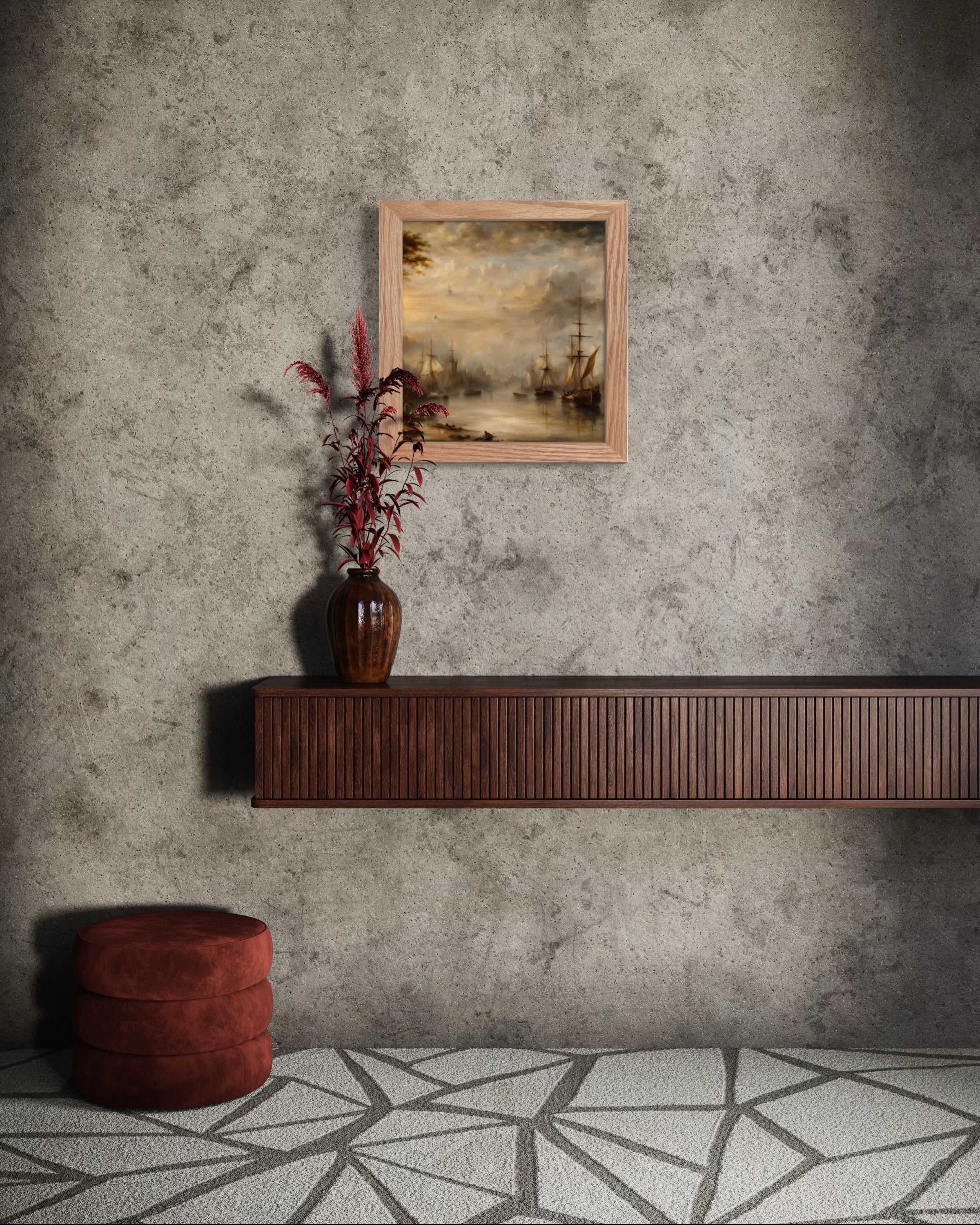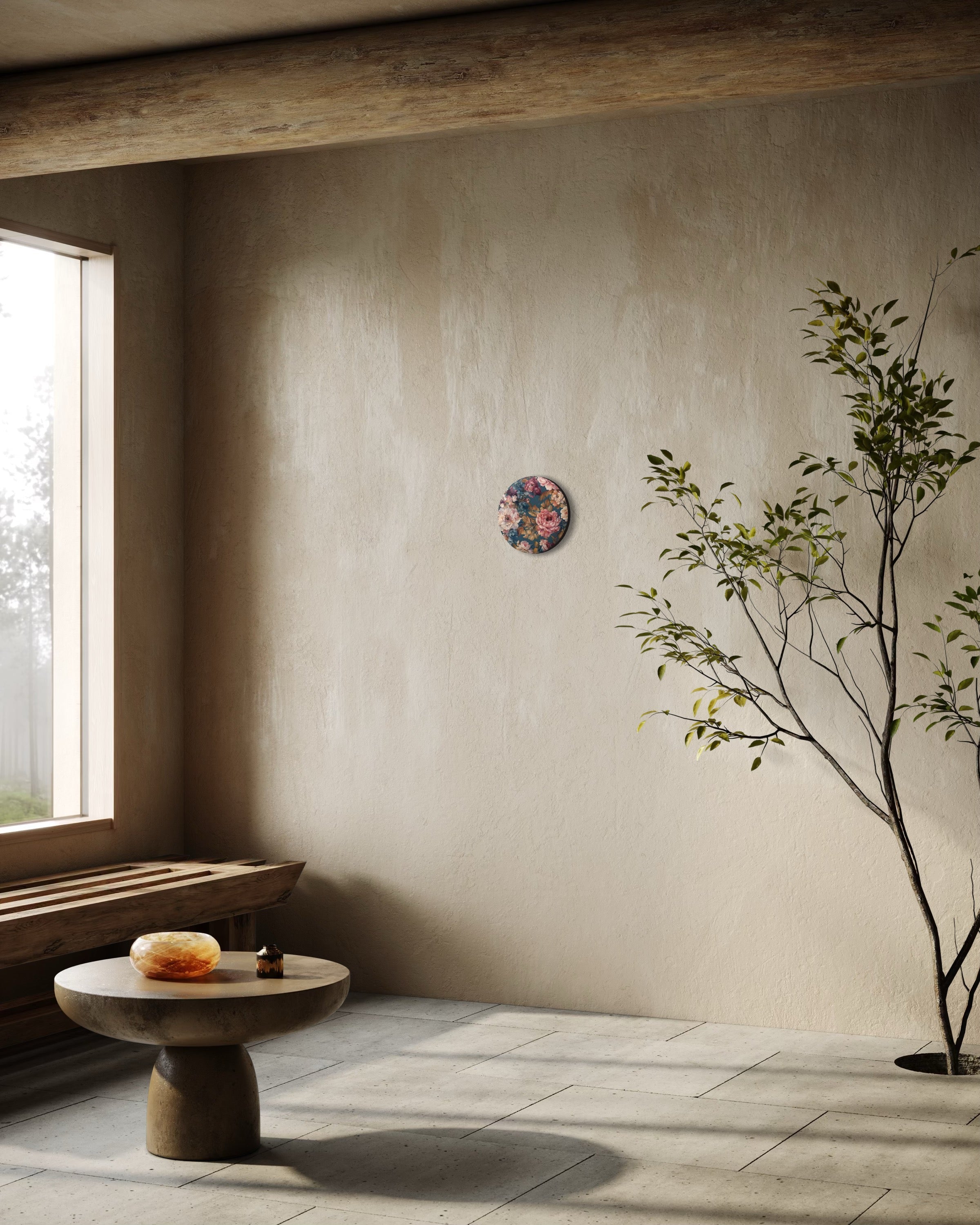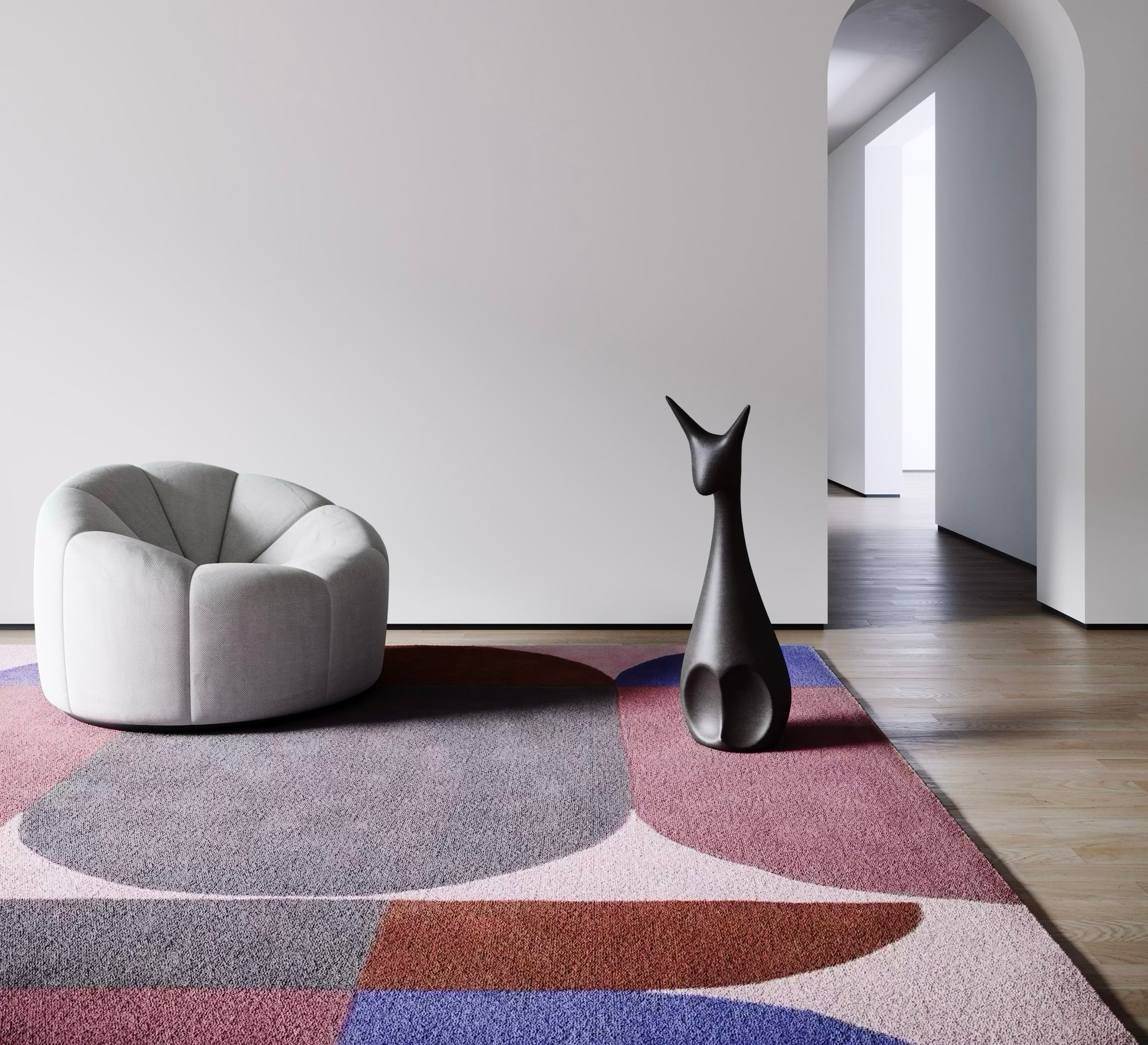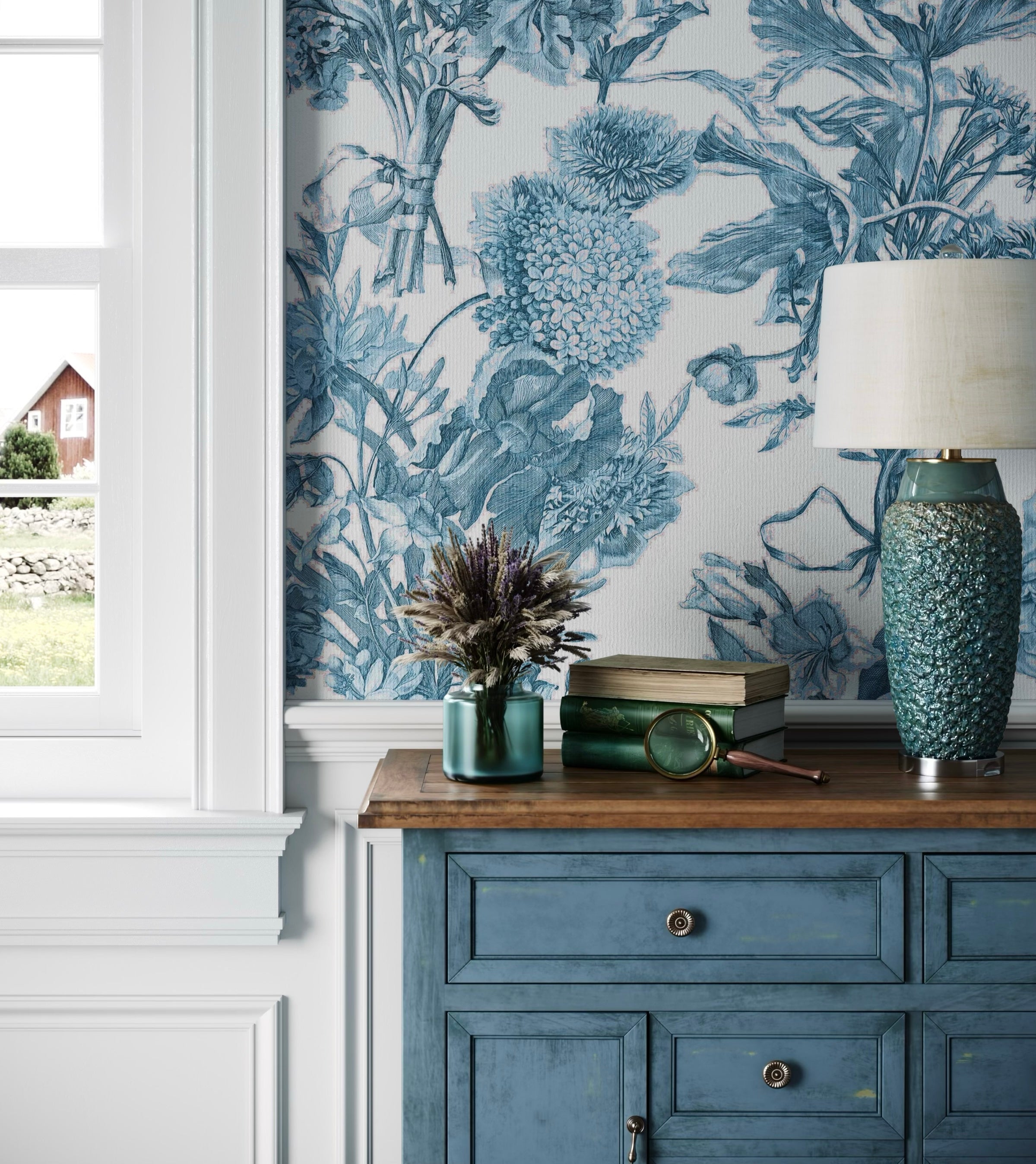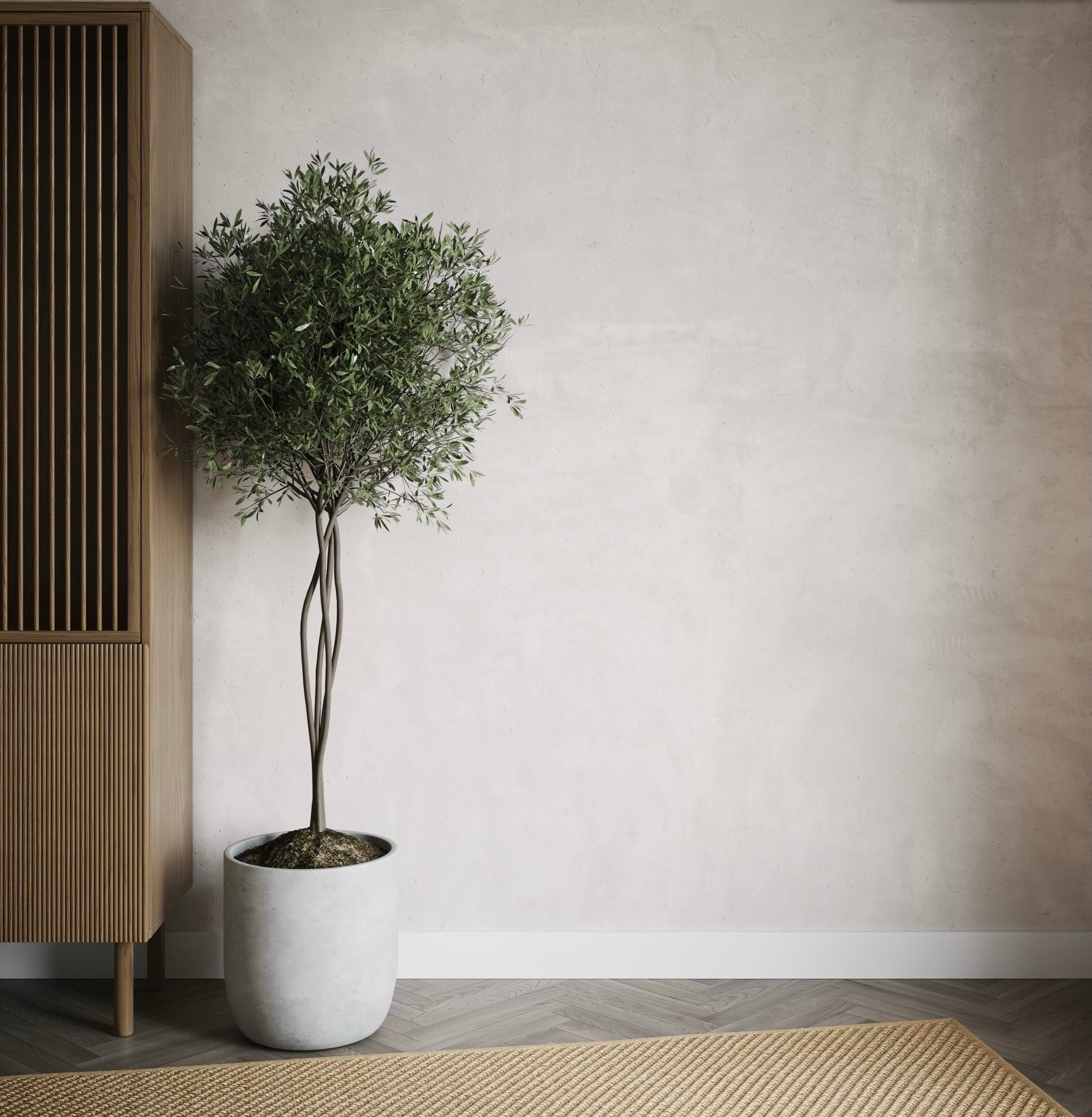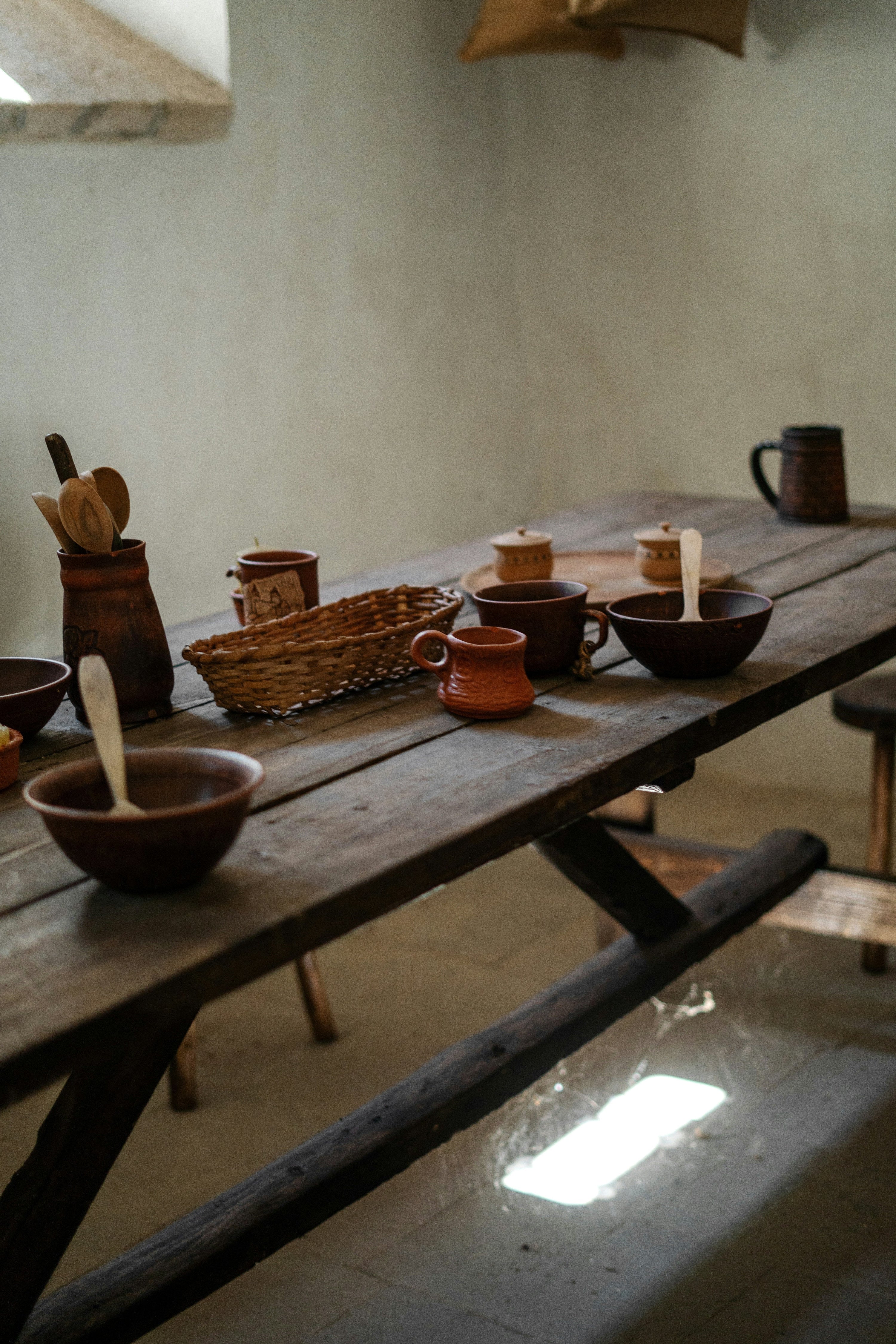
The Architecture of Gathering: Table Setting as Sanctuary
The table waits empty. Late October afternoon, light already failing though it's barely four o'clock. She moves between kitchen and dining room, carrying objects one at a time: linen runner the colour of aged paper, ceramic plates with hairline cracks that speak of years rather than damage, brass candleholders heavy in the hand. Each placement deliberate, a small decision about where things belong, how they relate, what the composition says before anyone speaks a word.
This is older than hospitality. Older than manners. The act of preparing surface for shared eating touches something primal: the circle around fire, the communal bowl, the agreement that for this time, in this space, we pause our separate struggles and become briefly, intentionally, together.
She folds napkins without thinking, hands remembering the motion from childhood tables, from her grandmother's hands doing the same. There's a particular weight to this preparation, a consciousness that what happens here tonight matters in ways that transcend the meal itself. The table becomes stage, altar, neutral ground where separate lives converge.
Outside, wind strips the last leaves from the ash tree. Inside, she lights the first candle. The flame steadies, catches on brass, throws soft light across linen. The table begins to hold something beyond its objects: expectation, intention, the promise that when people arrive, when they settle into chairs and reach for bread, something will shift from ordinary to consecrated.
This transformation, this making-sacred of the everyday, has been happening for as long as humans have gathered to eat. The rituals change, the objects evolve, but the essential act remains: we prepare a surface, we arrange things upon it with care, and through this arrangement we signal that what follows deserves attention, deserves reverence, deserves the full presence we so rarely offer the world.
When Romans Reclined: Hierarchy Made Horizontal
The Romans understood something about reclining that we've forgotten: that eating lying down creates different social dynamics, removes certain hierarchies whilst creating others. The triclinium, their dining arrangement, consisted of three couches forming three sides of a square, the fourth left open for servants to enter and exit. Nine diners maximum, three per couch, arranged according to complex social calculations.
The position of honour, the locus consularis, occupied the right end of the middle couch. From there, the host could see all guests whilst reclining on his left elbow, right hand free for eating. Each position carried meaning; where you were placed told you exactly how the host valued your presence, your status, your relationship. There was no ambiguity, no false egalitarianism. The arrangement made visible what was already true.
They ate with hands mostly, though spoons existed for liquids and soft foods. Food was cut in the kitchen, served in manageable pieces. This wasn't primitive but practical: when reclining on your left side, reaching for knife and fork becomes awkward, messy. Better to have everything prepared, everything within easy reach, allowing the diner to focus on conversation, on wine, on the subtle social negotiations happening across the laden table.
Wine rituals structured the entire evening. Not the wine itself so much as how it was mixed, served, consumed. Romans considered drinking undiluted wine barbaric, a mark of Germanic tribes and other uncivilised peoples. Proper wine was mixed with water, the proportions debated, the mixing itself ceremonial. The symposiarch, the evening's designated master, decided the ratio and pace of drinking. This wasn't about control but about maintaining the delicate balance where wine loosened tongues without dissolving judgment entirely.
Between courses, slaves washed guests' hands in rose-scented water, brought fresh napkins, cleared detritus. The table itself remained relatively spare: Romans didn't crowd surfaces with decorative objects. Function and food dominated. The opulence showed in what was eaten, in the succession of courses, in the exotic ingredients shipped from distant provinces. The peacock tongues, the dormice in honey, the elaborate sauces whose recipes we've mostly lost.
What we've lost more completely is the understanding that furniture arrangements encode power. Our tables, rectangular and democratic-seeming, still place people at heads and sides, still create proximity and distance, still determine who sees whom, who speaks across whom. We pretend the arrangement doesn't matter, that we've moved beyond such concerns. But watch where people choose to sit, notice who gravitates to which chair, and the old hierarchies reveal themselves, just less honestly acknowledged.
Medieval Halls: Salt Lines and Shared Trenchers
In medieval European great halls, the table itself was often a temporary affair: boards laid across trestles, assembled for meals, dismantled afterwards to create space for other activities. This impermanence meant that "setting the table" was literal construction, not mere arrangement. The hall transformed from empty space to dining room through deliberate assembly, physical labour that marked transition from dispersed activity to communal gathering.
The high table, positioned on a raised dais, accommodated the lord, his family, and honoured guests. Everyone else sat at trestle tables arranged perpendicular to the high table, their positions reflecting household hierarchy. This wasn't cruel but clarifying: in a society organised around rigid social structures, the hall's arrangement simply made visible what everyone already knew. To be seated below the salt was to be of lower status, a phrase that persists even though we no longer place salt cellars as boundary markers.
Salt occupied enormous symbolic and economic importance. Expensive, essential for preservation, difficult to procure in quantity, salt marked wealth and power. The great salt cellar, often elaborate silver or gold, divided high table from lower tables, aristocracy from everyone else. Its placement was calculated to the inch. To sit "above the salt" meant proximity to the lord, to favour, to power. Below the salt sat those of lesser importance: household servants, tradespeople, visitors of no particular distinction.
Trenchers, the thick slices of stale bread used as edible plates, were shared between two diners. You ate from the same bread surface as your neighbour, a forced intimacy that modern individual plates eliminate. This sharing created bonds, demanded negotiation about who took what, required awareness of the other person's needs and preferences. At meal's end, the trencher, soaked with meat juices and sauces, was given to the poor waiting outside or fed to dogs. Nothing wasted, hierarchy reinforced even in what remained.
Knives were personal items, carried by each diner. You brought your own blade to the table. Forks didn't exist yet in northern Europe; they were Italian innovations viewed with suspicion, considered effete and unnecessary. Fingers and knife sufficed. This meant everyone came armed to dinner, potentially dangerous in halls where blood feuds simmered and alliances shifted. Elaborate etiquette developed around knife use: never point the blade toward another diner, never gesture with the knife in hand, never use it to spear food from common dishes. These weren't merely manners but survival strategies.
The knife's placement carried its own folklore: sharp edge never faced guest. To position blade pointing toward someone signalled hostility, threatened violence, broke the fragile peace that meals attempted to create. This belief persisted for centuries, evolved into etiquette rules that forgot their origins but maintained the practice. Even now, properly set tables place knives with blade facing inward, toward the plate, though few remember why.
Ale flowed constantly. Water was often unsafe; weak ale provided hydration, calories, and communal lubrication. Toasts were mandatory, refusal to drink insulting. The hall grew loud as evening progressed, voices rising, songs breaking out, the formal hierarchy loosening slightly under alcohol's influence whilst never disappearing entirely. The lord remained the lord. The serf remained the serf. But for these hours, in this space, around these tables, something approaching fellowship occurred.
Persian Sofreh: The Cloth That Becomes Table
In Persian tradition, the sofreh transforms floor into dining space. Not a tablecloth but the table itself: cloth spread on carpet or rug, becoming surface that holds the meal. This low arrangement requires sitting on floor or cushions, bodies closer to earth, closer to each other, hierarchies flattened through proximity and shared level.
The sofreh's arrangement follows symbolic logic. Bread, always present, occupies honoured position. Breaking bread together isn't metaphor but literal act: the host tears flatbread, passes pieces to each guest, the sharing preceding all other food. Salt sits near bread, these two elements representing hospitality's essence. To be offered bread and salt meant welcome, protection, acceptance into the household's sphere of care.
Mirrors often appeared on Persian tables, reflecting candlelight, multiplying it across the space. The mirror's symbolic meaning ran deeper: it showed diners their own faces, reminded them of presence, of being seen whilst seeing others. The Nowruz haft-seen table, prepared for Persian New Year, includes mirror among its seven symbolic items, representing reflection, consideration, consciousness.
Fruit arranged in geometric patterns created living art: pomegranates split to show ruby seeds, quinces releasing their sharp-sweet scent, dried mulberries and figs forming concentric circles. The arrangements weren't random but intentional compositions, fruit's natural beauty enhanced through thoughtful placement. These displays honoured the meal without overwhelming it, added colour and form without demanding focus.
Persian tables held contradiction: abundance and restraint, plenty and deliberation. Multiple dishes appeared simultaneously, each guest free to choose, to combine, to create their own balance of flavours. Yet the overall composition maintained harmony, colours and shapes relating to each other, the sofreh becoming canvas for edible art.
The circular arrangement, or near-circular, meant everyone faced inward, toward the centre where food gathered. No head of table existed, no obvious hierarchy beyond age's natural deference. This doesn't mean equality precisely, Persian culture maintained its own social structures, but the sofreh's geometry created different dynamic than linear tables, different possibilities for eye contact and conversation flow.
After the meal, the sofreh was gathered, folded, stored. The floor returned to being floor, the space opening again. This temporariness, the way the table appeared and disappeared, made each gathering feel intentional, chosen, created rather than merely occurring.

Japanese Ma: The Space Between
Japanese table aesthetics honour what isn't there as much as what is. Ma, the concept of negative space, governs arrangement: the breathing room between objects, the pause that creates meaning, the emptiness that allows each element to be fully seen. A Japanese table holds few items, each positioned with precision, the space around them part of the composition.
Seasonal awareness determines everything. Spring tables might hold cherry blossom branch in simple vase, the flowers' brief bloom marking time's passage. Summer brings cool colours, glass vessels, arrangements suggesting water and breeze. Autumn offers persimmons, chrysanthemums, warm tones that echo falling leaves. Winter embraces starkness: bare branch, single camellia, colours muted into greys and browns relieved by occasional crimson.
The tea ceremony's influence extends beyond tea service into everyday table setting. The concept of ichigo ichie, "one time, one meeting," suggests that each gathering is unrepeatable, deserves full attention, merits conscious preparation. This attitude transforms routine dinners into opportunities for presence, for consideration, for the care that makes ordinary moments sacred.
Ceramics on Japanese tables often show deliberate imperfection: the wabi-sabi aesthetic that values age, wear, the marks of use and time. A bowl with gold-repaired crack becomes more beautiful for being broken and mended, the kintsugi technique celebrating repair rather than disguising it. This philosophy extends to table setting itself: the slightly irregular placement, the asymmetrical arrangement, the acceptance that perfection lies in imperfection.
Chopsticks rest on hashioki, small ceramic or wood pieces that elevate the utensils, prevent them from touching the table directly. This small gesture, this tiny object serving single purpose, exemplifies Japanese attention to detail, the belief that even smallest elements deserve consideration. The hashioki might be seasonal: autumn leaf shape, winter snowflake, spring flower. Functional object becoming art through intentional design.
Indian Thali: The Circle of Completeness
The thali plate embodies Indian dining philosophy: all elements present simultaneously, each occupying designated space, the meal complete from first moment. The round metal plate, traditionally brass or stainless steel, holds small bowls arranged in circle, each containing different preparation: dal, vegetable curry, rice, raita, chutney, pickle. The centre remains open or holds chapati, the flatbread that serves as utensil and food combined.
This circular arrangement carries symbolic weight. The plate represents cosmos, each bowl a different aspect of existence, the meal microcosm of universal completeness. Right hand, never left, lifts food to mouth, the left considered unclean, inappropriate for eating. This isn't arbitrary but deeply embedded cultural practice, hygiene and tradition intertwined in gesture so automatic that thought doesn't precede it.
The thali's beauty lies in its balance: six tastes (sweet, sour, salty, bitter, pungent, astringent) present in proper proportion, following Ayurvedic principles that link food to health, digestion to wellbeing. This isn't nutrition science but older wisdom, the understanding that variety in taste creates satisfaction, that balance in flavour supports body's needs.
Temple thaalis, served in South Indian religious contexts, follow strict vegetarian requirements, served on banana leaf rather than metal. The leaf itself determines arrangement: rice occupies lower left, sambhar (lentil stew) poured over or beside it, vegetables arranged above, condiments dotted in specific positions. The precision isn't fussiness but ritual, each element's placement carrying meaning understood by those who eat, participated in through generations.
Eating from shared family thali creates intimacy, the multiple hands reaching toward same dishes, the negotiation about who takes what, when. Though individual thalis are common now, particularly in restaurants, the traditional family meal involved communal plate, everyone's fingers meeting over rice and curry, the sharing absolute, unavoidable.
Ethiopian Coffee Ceremony: Three Rounds of Patience
Ethiopian coffee ceremony, the buna, can last two hours or more. This isn't inefficiency but deliberate pacing, recognition that coffee drinking merits time, attention, conversation unhurried by schedule or obligation. The ceremony marks special occasions, welcomes guests, transforms ordinary afternoon into occasion through ritual's patient unfolding.
The host, traditionally woman, begins by spreading fresh grass on floor, green blades creating temporary meadow inside the home. This brings outside in, makes room smell of cut grass and earth, grounds the ceremony in natural world. Incense burns throughout, frankincense usually, its resinous smoke mixing with grass scent and later with coffee's bitter perfume.
Green coffee beans roast in flat pan over charcoal or small flame, the host stirring constantly, watching colour shift from green to yellow to brown to almost black. The scent intensifies as beans darken, fills the room, announces the ceremony's progress to everyone present. When perfectly roasted, the beans circulate among guests, each person inhaling deeply, approving the roast before the host proceeds.
Roasted beans move to mortar, are ground by hand with pestle, the rhythmic pounding creating soundscape, meditation through repetition. The grounds enter jebena, traditional clay coffee pot with long neck and round bottom, narrow spout for pouring. Water boils, mixes with grounds, the jebena placed directly on heat source, coffee brewing strong and thick.
Three rounds follow, each weaker than the last. The first, abol, is strongest, served to guests in order of age or honour. The second, tona, offers mellower flavour, conversation deepening as coffee's bitterness softens. The third, baraka (meaning blessing), provides gentle finish, closes ceremony without abruptness. To refuse the third round risks offending, suggests impatience, failure to value the time offered.
Small cups, handleless and thimble-sized, serve the coffee. Sugar available, sometimes salt, occasionally rue or butter for flavour. But the coffee itself, strong and unadorned, carries the ceremony. Everything else, the grass and incense, the roasting and grinding, the three patient rounds, exists to honour this bitter brew, to make its drinking something more than caffeine delivery, something closer to communion.
The ceremony creates time outside time, hours where nothing happens except coffee and conversation, where the rushing world pauses at the door. This is hospitality as gift: offering not just drink but undivided attention, unhurried presence, the implicit message that you, the guest, deserve these hours, merit this care.
Mexican Ofrenda: The Table Between Worlds
On Día de Muertos, Mexican families construct ofrendas, altars that function as tables for the dead. These aren't morbid but celebratory, the dead returning annually not as ghosts but as honoured guests, their favourite foods prepared, their photographs displayed, marigold petals creating orange paths from door to altar so the returning spirits can find their way home.
The ofrenda's structure rises in tiers: two or three levels, sometimes more, each holding different elements. The highest level often displays photographs, faces of the departed watching over the feast prepared below. Candles light the way, their flames multiplying across mirrors positioned on the altar, creating constellation of lights that guide spirits through darkness.
Pan de muerto, bread of the dead, occupies central position. Round loaf topped with bone-shaped dough, the bread sweet and enriched with orange blossom water, made specifically for this occasion. The bone shapes aren't grim but playful, acknowledgment that death comes for everyone, might as well be greeted with humour and appetite.
Favourite foods of the deceased appear in abundance: mole if they loved it, tamales wrapped in corn husks, fresh fruit cut and arranged, glasses of water to quench spirit-thirst after long journey from the other side. Tequila or mezcal for those who enjoyed strong drink in life, cigarettes for those who smoked, small items they treasured. The altar becomes portrait in objects, life's preferences made visible through material offerings.
Marigolds, cempasúchil, cover every surface, their intense orange petals scattered on tablecloth, arranged in vases, woven into wreaths. The flower's colour and scent supposedly attract spirits, guide them like beacons. Their presence transforms the altar from furniture into threshold, boundary place where living and dead meet briefly, share space, commune across the division that death creates.
Copal incense smokes continuously, its piney resinous scent mixing with marigold's sharpness, bread's sweetness, candle wax's warmth. The combined scents create atmosphere unlike any other, distinctive and immediately recognisable to anyone who has experienced Día de Muertos. Scent becomes memory made tangible, past returning through sensory trigger.
The ofrenda remains in place for two days while the dead visit. Families gather around it, eat together, tell stories about those whose pictures watch from above. Children eat sugar skulls inscribed with names, the sweetness literally incorporating memory of the departed. Then, after the days allotted for visiting pass, the altar is dismantled, the food distributed to family and friends, the cycle complete until next year when it begins again.
This is table setting as portal, as bridge between states of being. The ofrenda doesn't deny death but refuses to let it be ending, insists that love persists, that care continues, that the dead remain part of family, welcomed annually to table prepared with same attention and generosity they received in life.

Folklore of Threshold Foods
Certain foods carry weight beyond nutrition, serve ritual functions at table's edge, mark transitions between states, between welcome and belonging. Bread and salt, offered together across Slavic and Middle Eastern cultures, signal absolute hospitality. To share bread and salt with someone means you've brought them into protective sphere, guaranteed safety, extended trust beyond casual acquaintance. Breaking this trust after accepting bread and salt compounds the betrayal, violates sacred compact.
The tradition runs deep enough that migrants carried it across oceans, maintained it in new lands, the gesture persisting even when understanding of its original meaning faded. Russian immigrants to America continued offering bread and salt to new neighbours, the ritual surviving displacement and cultural mixing, proving itself essential enough to preserve.
The empty chair, left at table for unexpected guest, appears in Irish tradition and others. The chair signals readiness, openness, the household's willingness to welcome whoever appears. Some say the chair awaits the return of emigrated family members, those scattered by famine or opportunity. Others suggest it honours dead relatives, the recently departed still considered part of the family's circle.
Jewish Passover seder includes empty chair for Elijah, cup of wine poured but not drunk, door left ajar so the prophet can enter. Children watch the wine level, convinced they see it lower slightly, evidence of the visitation. This empty seat transforms absence into presence, makes the unseen participant active, includes what's missing in what remains.
Honey marks thresholds across cultures: drizzled on bread for new homeowners, eaten at Jewish New Year for sweet year ahead, offered at Persian Nowruz. The sweetness carries forward, promises good beginning, extends the moment of crossing into symbolic significance. This isn't superstition precisely but intention made edible, hope given form that dissolves on tongue, enters body, becomes part of whoever eats it.
Pomegranate seeds scattered on doorsteps in Mediterranean and Middle Eastern cultures ensure prosperity, the fruit's abundance symbolising plenty, its seeds representing coins, fertility, multiplying blessings. Greek custom requires breaking pomegranate at New Year, the more seeds that scatter, the greater the coming fortune. The red juice stains floors, marks the threshold, proves the ritual occurred.
Salt spilled at table provokes immediate response in many cultures: thrown over left shoulder, three grains tossed backward, elaborate countermeasures to avert bad luck salt-spilling supposedly triggers. The superstition makes sense when salt's historical value is remembered: expensive, precious, spilling it meant genuine loss. Better to have ritual compensation, action that transforms accident into deliberate gesture, takes back control through symbolic response.
These threshold foods and gestures persist because they do something, they mark moments as significant, they transform ordinary transitions into conscious crossings. The table becomes not just furniture but ceremonial space, and what happens there, how we enter it, what we offer, creates meaning beyond sustenance.
Material Histories: What Tables Are Made From
Linen has covered European tables for centuries, the fabric's smooth strength and absorbency making it ideal for meals' inevitable spills. But linen's dominance wasn't merely practical. Flax, linen's source, grows easily in northern climates, requires minimal processing compared to cotton, and produces fabric that improves with washing, grows softer through use while maintaining structure.
Damask weave, developed in Damascus and perfected in European textile centres, creates patterns woven into fabric rather than printed on it. Light catches these patterns differently depending on angle, the designs visible primarily through sheen variation rather than colour contrast. This subtlety appealed to refined taste, suggested wealth without ostentation. A damask tablecloth required skilled weaving, expensive materials, careful maintenance. To set table with damask signalled status whilst maintaining restraint.
Cotton eventually challenged linen's dominance when colonial trade made it widely available and affordable. Cotton's finer weave allowed more elaborate patterns, its ability to take dyes created colour options linen couldn't match. But linen held cultural associations cotton couldn't acquire: tradition, heritage, the weight of European textile history.
Ceramic evolved from earthenware's humble practicality to porcelain's aristocratic refinement. The Chinese developed porcelain centuries before European potters decoded the formula, their white translucent vessels arriving via trade routes to Medieval courts where they were prized like jewels, literally worth their weight in silver. European nobility ate from porcelain rarely, displayed it prominently, commissioned pieces from China decorated to European specifications.
When Meissen factory in Germany cracked porcelain's secret in early 1700s, European ceramic production transformed. No longer dependent on Chinese imports, porcelain became accessible to broader markets whilst remaining expensive enough to signal taste and wealth. Table settings became matching sets, the aesthetic of coordinated dishes replacing the eclectic mix of whatever pottery and metal vessels households possessed.
Brass and copper brought warm metallic gleam to Middle Eastern tables. These metals conduct heat efficiently, making them excellent for serving hot foods, their weight and solidity suggesting permanence. They require polishing, the brightwork demanding care, but this maintenance became ritual itself, the regular polishing marking seasonal cycles, preparing for holidays, making ordinary objects ceremonial through attention and effort.
Wood versus metal in cutlery represents competing values. Wood handles grow warm in the hand, feel alive in ways metal never does. But wood requires more care: it splits if dried too thoroughly, warps if kept too damp, stains permanently from certain foods. Metal is practical, durable, sanitisable. The choice reflects priorities: efficiency or connection, convenience or continuation of older craft traditions that accepted maintenance as part of ownership.
Glass revolutionised table aesthetics when Venetian craftsmen achieved clear, uncoloured glass in the fifteenth century. Previous glass had been greenish or brownish, cloudy, opaque. Clear glass that allowed light through, that caught candlelight and multiplied it, that made wine's colour visible, transformed dining from purely functional to visual experience. The Venetians guarded their techniques obsessively, forbade glassmakers from leaving the island, controlled the secret with ruthless efficiency.
When light passes through glass vessel, it fractures, bends, creates small rainbows at certain angles. Wine in glass catches candlelight and throws it across table, creates moving shadows, adds layer of visual interest that pottery or metal cannot provide. This quality makes glass special despite its fragility, perhaps because of it: the beauty requires care, demands attention, refuses to be taken for granted.
Contemporary Practice: Bringing Ritual Back
In our efficient age, the table often becomes afterthought: eat quickly, clean quickly, move on. But some practices return to older understanding that the table merits attention, that how we eat shapes what we experience, that ritual needn't be elaborate to be meaningful.
Biophilic table setting brings seasonal change indoors through gathered branches, foraged elements, what's currently growing or fruiting. October tables might hold crab apple branches with tiny fruit still attached, their weight bending stems into natural sculpture. November brings bare branches or dried grasses, their straw colours warming candlelight. This practice connects the meal to season and place, grounds the gathering in particular moment of year.
These elements needn't be elaborate arrangements. A few stems in simple vessel suffices: hawthorn berries, rosehip branches, autumn leaves going copper and gold. The intention is presence not perfection, reminder that outside the window, the world continues its seasonal progression, and we pause within our warm rooms but remain connected to what surrounds.
Natural linen runners layer the table without overwhelming it, providing texture and warmth whilst allowing wood grain to show through. The textile absorbs spills, softens the hard edge of wood or stone, creates defined space for plates whilst maintaining overall composition's breathing room. Linen's tendency to wrinkle slightly, to show its use, aligns with wabi-sabi acceptance: the fabric bears witness to gatherings past, carries history in its creases.
Candlelight affects human nervous system measurably: warm spectrum lacking blue wavelengths allows melatonin production, signals evening's arrival, reduces cortisol. Electric light, particularly LED, maintains alertness, prevents circadian wind-down, subtly stresses bodies expecting darkness to bring rest. Candles return us to evolutionary appropriate lighting, flame's flicker engaging peripheral vision without demanding focus, creating atmosphere that electric bulbs cannot replicate.
Brass or ceramic candleholders catch and multiply flame's light, throw gentle illumination across faces and food, create moving shadows that enliven static spaces. The care required to light candles, to ensure they're stable and safe, to extinguish them properly after the meal, creates small ritual, punctuation between ordinary time and gathered time.
Textile layering builds depth without clutter: runner defines the table's centre line, natural fibre placemats create individual zones, napkins add colour accent or textural contrast. Each layer serves function whilst contributing to overall composition. This isn't precious styling but thoughtful arrangement, each element earning its placement through utility and beauty combined.
Object curation matters more than abundance. Three beautiful ceramic vessels holding simple fare outweigh elaborate spread on mediocre dishes. The vessels' shapes, glazes, weights in the hand, how they relate to each other spatially all contribute to the experience. This is slow looking applied to table setting: choosing consciously, arranging deliberately, allowing quality to speak rather than quantity to overwhelm.
The practice becomes meditation: considering what to place where, why this bowl with that plate, whether another element adds or detracts. The decisions small but cumulative, building toward composition that feels inevitable, like it could be no other way, though infinite variations existed before these particular choices resolved into this particular arrangement.
What the Table Holds
The light has fully gone now. Candles burn steadily, three flames catching on brass, reflecting in the window's dark glass. She steps back, looks at what she's made: the table no longer empty but not yet complete, waiting for the final element, the people who will fill the chairs and bring it all to life.
In an hour, voices will rise, laughter will interrupt, hands will reach for bread. The careful arrangement will be disrupted by serving spoons and wine bottles, by elbows leaning and napkins unfolding. The composition will give way to use, to function, to the beautiful chaos of people gathered.
But for now, this suspended moment before arrival, the table holds pure potential. It holds the hours of preparation, the thought given to each object's placement, the intention that transforms eating from necessity to ceremony. It holds centuries of tradition: the Roman understanding that arrangement encodes power, the medieval recognition that salt marks boundaries, the Persian wisdom that circle creates equality, the Japanese appreciation of space between objects, the Ethiopian patience of three rounds of coffee, the Mexican generosity of tables that feed both living and dead.
The table holds more than food. It holds attention freely given, time set aside, the agreement to be present with each other despite distraction and duty pulling elsewhere. In this room, for these hours, the world contracts to this surface, these faces, this shared moment of nourishment and connection.
She hears the first arrival, door opening, voices in the hallway. The wait is over. The table, prepared with such care, will now fulfil its purpose: to bring people together, to hold them gently, to provide ground on which strangers become friends, friends become family, family remembers why it persists through difficulty and distance.
The architecture of gathering is not the walls that contain but the table that anchors, the objects that mark the space as special, the rituals that transform ordinary eating into communion. Every culture knows this. Every tradition encodes it. And now, this evening, this table, these people arriving with cold hands and warm greetings, it happens again: the ancient miracle of gathering, of pausing separate lives to create brief, precious, essential togetherness.
The first guest enters the room, sees the table, stops. "Oh," she says, just that, just the exhale of recognition that someone has taken care, has made effort, has created welcome. And that single syllable, that small sound of appreciation, justifies every minute spent in preparation, every decision about placement and light.
They settle into chairs. Hands reach. The candles burn on. Outside, autumn wind strips the last leaves. Inside, the table holds them all.
Photography: Medieval dining vibe by Olena Bohovyk via Unsplash. Japanse outdoor Saki drink arrangements by Haijiang Zeng via Unsplash. Mexican outdoor gatheing by Diego Marin via Unsplash.
This article represents part of Sisuverse's ongoing exploration of how thoughtfully chosen objects and conscious rituals enrich daily living through cultural depth, seasonal awareness, and deep connection to traditions that span continents and centuries. Explore our curated selection of table linens, ceramic vessels, and objects that honour craft to create your own sanctuary through the architecture of gathering.
Enrich lives
